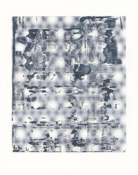
Graphite

Graphite
Signed Print
Gerhard Richter
£14,500-£21,000
$30,000-$45,000 Value Indicator
$27,000-$40,000 Value Indicator
¥140,000-¥200,000 Value Indicator
€17,000-€24,000 Value Indicator
$150,000-$220,000 Value Indicator
¥2,880,000-¥4,170,000 Value Indicator
$19,000-$28,000 Value Indicator
There aren't enough data points on this work for a comprehensive result. Please speak to a specialist by making an enquiry.
96 x 74cm, Edition of 90, Screenprint
Auction Results

Track auction value trend
Meaning & Analysis
Graphite (2005) is a signed screen print by internationally acclaimed German artist, Gerhard Richter. Released in a limited edition of 90, the artwork belongs to a series of prints based on a nano technologically image of carbon atoms of graphite.
Coupling an engaging simplicity with technical sophistication, Graphite attests to the rich diversity of sources that inspire Richter’s creative practice. Using the image of carbon atoms of graphite as a base, the artist engages with the problems of the scientific culture. This represents an unobvious direction against the themes of memory and time that are among the most representative of Richter’s oeuvre. The blurred picture of the atomic structure in Graphite is strongly connected to the artist’s preoccupation with the possibilities of knowing and representing reality. Just like abstract paintings are, in Richter’s view, ‘a fictitious model’ of reality, so is the scientific representation. The artist commented in 1982: ‘Abstract paintings are like fictitious models because they visualise a reality which we can neither see nor describe but which we nevertheless conclude exists. We attract negative names to this reality: the un-known, the un-graspable, the infinite, and for thousands of years we depicted it in terms of absolute images like heaven and hell. With abstract painting we create a better means of approaching what can neither be seen nor understood because abstract painting illustrates with the greatest clarity… with all the means at the disposal of art, ‘nothing’”.